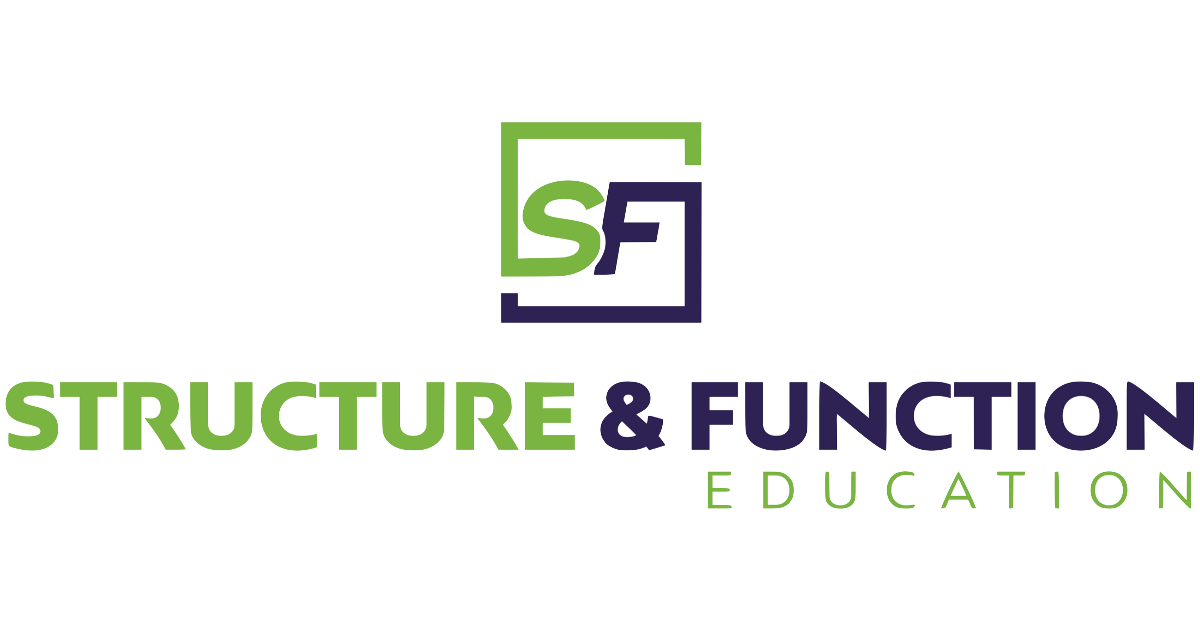
Bridging The Gap Chapter 9: Fundamental Performance
Who is this course for?
The Bridging The Gap Chapter 9: Fundamental Performance course is intended for both health care practitioners as well as strength and conditioning professionals who are looking to improve their fundamental understanding of strength and power development in the rehabilitating client.
In this course, Sue discusses everything a practitioner needs to consider for the client who is nearing the end stages of bridging the gap from rehab to performance. This course will highlight key fundamental considerations for supercompensation, periodization, strength, power, load, time under tension, plyometrics, physiological adaptation and much, much more.
As a therapist…
We can become very comfortable prescribing exercises in 3 sets of 10 in our rehabilitating patients and clients, with just enough load to stimulate an anti-atrophy response. However, when working with higher level athletes, this set / rep scheme and load may simply not be enough to return someone to their sport. Understanding the foundations of periodization and programming is key when working in the end stages of the BTG process.
Even if you are a clinician that doesn’t necessarily work directly with patients during end-stage rehab, understanding the full process and being able to communicate with other professionals is essential for athlete-centered care. This course will provide you with the essentials for understanding strength and power development, as it relates to end-stage rehab.
Are you dealing with patients or clients at the end stage of the bridging the gap from rehab to performance process?
You need to understand how to safely and properly apply concepts of periodization, load and time under tension to stimulate the physiological response you are looking for in your patient, over a period of time. End stage rehab is an area that, if not well implemented, can lead to under-preparing your client to return to play or even re-injury. The concepts discussed in this course are vital for anyone working with clients requiring strength and power to return to their sport.
Do you want to learn ways to improve the results with X?
- Strength and power are fundamental concepts to understand
- Knowing how to manipulate variables to improve strength and power in your client is a must
- Developing progressive programming is key to safely implementing these concepts with your rehabilitating clients
Learn about…
- Fundamental program considerations for the end stages of bridging the gap from rehab to performance
- Movement classifications and how these can be used for program development
- Variables that can affect an athletes’ performance, as they begin the process of returning to sport
This course is for you if you are you looking to…
Learn about kinetic linking and how Fundamental Performance fits within the BTG model…Module 2 is for you.
Learn about different types of movement categories and programming variables… Module 3 is for you.
Learn about the different variables that can be manipulated to stimulate a specific physiologic adaptation…Module 4 is for you.
Learn new concepts in plyometric training…Module 5 is for you.
Your instructor Sue will discuss…
- Why Fundamental Performance is a vital component of the Bridging the Gap from Rehab to Performance Process
- All things related to strength and power development as it relates to the rehabilitating athlete
- Programming based off of desired physiological adaptations, and how variable manipulation impacts programming
Do you need CEU credits but can’t find the time to go to a class
Let online education help you out!
Learn at your own pace, in your ideal environment!
You’re a busy professional. You need to balance your career, home life and find time to continue your education.
As long as you have Internet access you can access the course from anywhere.
Advance your career in areas of focused study, geared towards your personal learning goals.
Becoming an expert takes time. It takes continuous study and practice. When you gain knowledge you are advancing your professional career. Online learning gives you the opportunity to focus on the skills you need.
Topics that you enjoy.
Select topics that interest you. Topics that you find fascinating. Online distance learning allows you to find topics that might not be available locally.
Learn at your own pace.
Everyone has their own rhythm. Some people only need to hear a lecture once and take perfect notes, while others might need to listen more than once. Online learning gives you the option to repeat a lecture for maximum affect.
Are there Continuing Education Units (CEU)?
Athletic Trainers:
Structure and Function Education (BOC AP# P10069) is approved by the Board of Certification, Inc. to provide continuing education to Athletic Trainers. This program is approved for a maximum of 6 Category A CEUs. ATs should claim only those hours actually spent in the educational program.
Physical Therapists:
Structure & Function Education is an Approved Provider of Continuing Competence Activities through the Texas Physical Therapy Association. This course is approved for 6 CEUs.
Chiropractors:
Structure and Function Education is a PACE Recognized Provider. This course is designated for 6 Continuing Education Units.
PACE is a division of the Federation of Chiropractic Licensing Boards, and serves Alabama, Alaska, Arizona, Connecticut, District of Columbia, Georgia, Idaho, Indiana, Iowa, Kansas, Louisiana, Maine, Maryland, Massachusetts, Minnesota, Montana, Nebraska, Nevada, New Jersey, New Mexico, North Carolina, North Dakota, Oklahoma, Ohio, Oregon, Rhode Island, South Carolina, South Dakota, Tennessee, Texas, Utah, Vermont, Virginia, Washington and Wyoming
Full Course description
What will you learn as a student in this Course?
- Describe and discuss concepts of supercompensation and periodization
- Describe fundamental performance considerations for bridging the gap from rehab to performance
- Describe different movement types for programming
- Discuss programming manipulation in order to produce a desired physiological effect
- Discuss emerging concepts in plyometric training, as it relates to fascia
What’s included in this course?
- 6 lessons including, 2 hours of video
- A complete downloadable transcript for you to follow along.
- 10 article readings
- Course completion quiz
Reading materials
All reading materials are downloaded through PubMed free PMC with the exception of Chapter 9 in Sue’s book. Get your your copy here.
Falsone S. Chapter 9: Bridging the Gap from Rehab to Performance. On Target Publications; 2018.
Silva AF, Clemente FM, Lima R, Nikolaidis PT, Rosemann T, Knechtle B. The Effect of Plyometric Training in Volleyball Players: A Systematic Review. Int J Environ Res Public Health. 2019;16(16):2960. Published 2019 Aug 17. doi:10.3390/ijerph16162960Zügel M, Maganaris CN, Wilke J, et al. Fascial tissue research in sports medicine: from molecules to tissue adaptation, injury and diagnostics: consensus statement. Br J Sports Med. 2018;52(23):1497. doi:10.1136/bjsports-2018-099308
Register Now for this course
Meet Your Instructor
Pricing Information
Monthly Subscription
$ 19.99 Monthly- Total cost $240 per year.
- 3-day free trial!
- Monthly membership.
- Cancel any time!
- Access to all online classes!
- Access to class discussions.
- Access to the subscriber only community.
- Live Q&A sessions with Sue, Brian and other S&F Education instructors.
Yearly Subscription
$ 199.00 Annually- Save $40 over the monthly cost
- 3-day free trial!
- Yearly membership.
- Cancel any time!
- Access to all online classes!
- Access to class discussions.
- Access to the subscriber only community.
- Live Q&A sessions with Sue, Brian and other S&F Education instructors.
Satisfaction Guarantee
If you aren’t satisfied with the course within the first 30 days after your first payment but before you have taken the final exam, you can get a refund. We’ll cancel the course immediately upon your refund request and issue the refund to your credit card though our processor Stripe.
Frequently Asked Questions
How is the course delivered?
The course is a series of video lectures and readings. The student is allowed to proceed at their own pace. The is an exam at then end that the student needs to pass.
How soon can I use the techniques learned in my practice?
You can use it immediately after passing the exam.
How long do I have access to the course?
One time purchases of the course will have full access to the course for 12 months starting on the date of purchase. Membership Subscribers have access until the end of the current subscription period.
P.S
If you are a clinician wanting to improve your end stage rehab programs, or if you are a Strength & Conditioning performance coach looking to apply these concepts to the rehabilitating patient, this course is for you.
Bridging The Gap Chapter 9: Fundamental Performance

The Bridging The Gap Chapter 9: Fundamental Performance course is intended for both health care practitioners as well as strength and conditioning professionals who are looking to improve their fundamental understanding of strength and power development in the rehabilitating client.
Course Provider: Organization
Course Provider Name: Structure & Function Education
Course Provider URL: https://structureandfunction.net/online-courses/btg-chapter-9-fundamental-performance/
Course Mode: Online
Course Workload: PT6H
Duration: PT6H
Repeat Frequency: Daily
Course Type: Paid
Course Currency: USD
5


